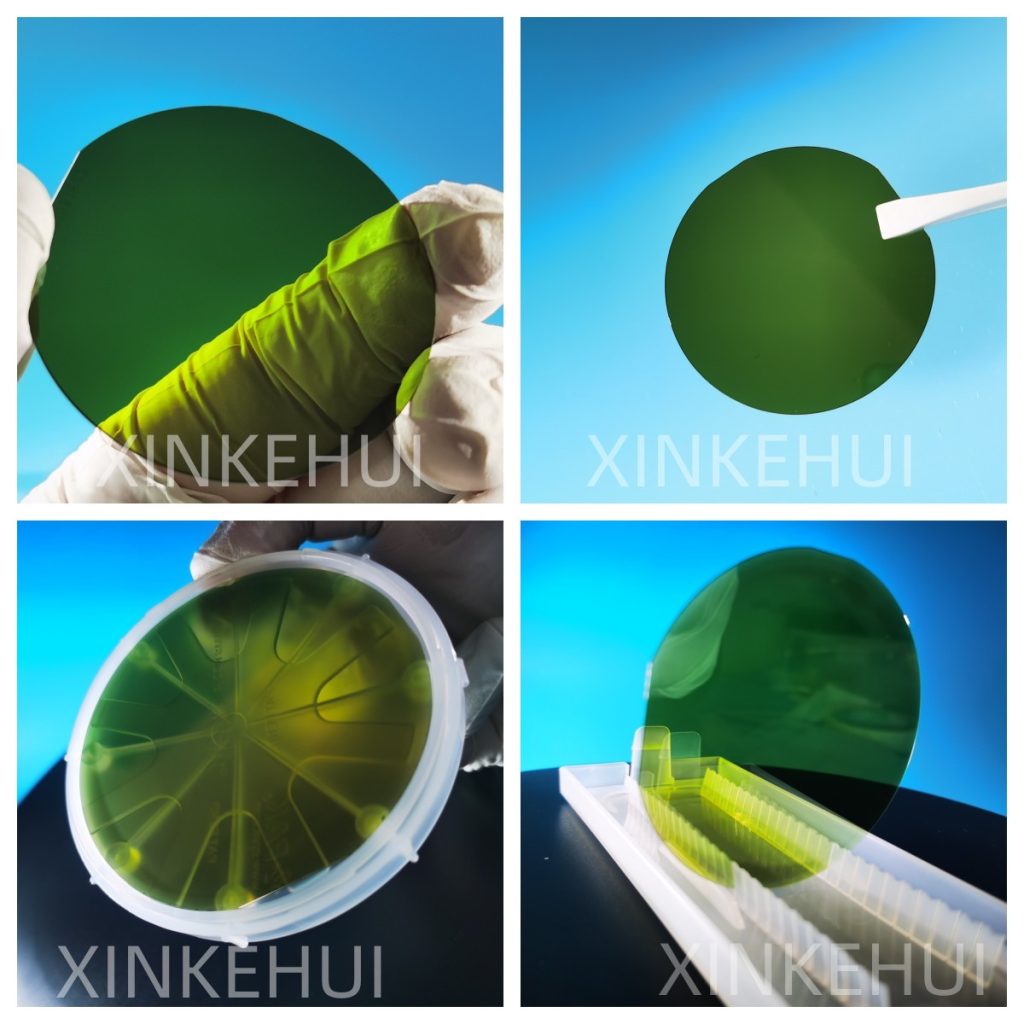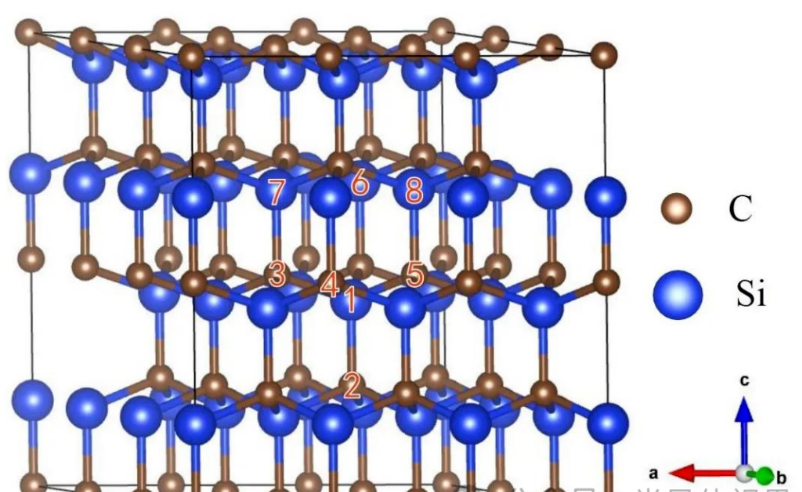Silicon carbide wafers have both C-face and Si-face orientations because of the way they are grown.
Silicon carbide wafers(SiC) is a binary compound formed by silicon (Si) and carbon (C) in a 1:1 ratio, with its basic structural unit being the Si-C tetrahedron.
Take an example: Si atoms have a larger diameter, equivalent to apples, while C atoms have a smaller diameter, equivalent to oranges. When an equal number of oranges and apples are stacked together, it forms a Silicon carbidecrystal.
Silicon carbide is a binary compound, where the Si-Si bond atomic distance is 3.89 Å. How to understand this distance? Currently, the most advanced lithography machines on the market have a lithographic precision of 3 nm, which is equivalent to a distance of 30 Å. The lithographic precision is eight times the atomic distance.
The Si-Si bond energy is 310 kJ/mol, which can be understood as the force required to pull these two atoms apart. The greater the bond energy, the greater the force required to separate them.
The Si-C bond atomic distance is 1.89 Å, and the bond energy is 447 kJ/mol.
From the bond energy, it can be seen that compared to traditional silicon-based semiconductor materials, silicon carbide-based semiconductor materials have more stable chemical properties.
From the diagram, it can be observed that any C atom is connected to the nearest four Si atoms, and vice versa, any Si atom is connected to the nearest four C atoms.
The crystal structure of Silicon carbide can also be described using a layered structure method, as shown in the diagram. In the crystal, several C atoms occupy hexagonal lattice sites in the same plane, forming a layer of densely packed C atoms, while Si atoms also occupy hexagonal lattice sites in the same plane, forming a layer of densely packed Si atoms.
Each C atom in the densely packed layer is connected to the nearest Si atom, and vice versa, the same applies to the densely packed layer of Si atoms. Every two adjacent C and Si atom densely packed layers constitute a carbon-silicon bilayer.
The arrangement of SiC crystals is extremely diverse, with over 200 different crystal types discovered so far. This is similar to a Tetris game, where although the smallest unit blocks are the same, when combined, they form different shapes.
The spatial structure of SiC is slightly more complex than Tetris; its smallest unit changes from a small square to a small tetrahedron composed of C and Si atoms.
To distinguish between different crystal types of SiC, the Ramsdell method is primarily used for labeling. This method combines letters and numbers to represent the different crystal types of SiC.
The letter is placed at the end to indicate the crystal’s cell type: C represents cubic crystal structure, H represents hexagonal crystal structure, and R represents rhombic crystal structure. The number is placed at the beginning to indicate the number of layers of the basic repeating unit of the Si-C bilayer.
Except for 2H-SiC and 3C-SiC, all other crystal types can be considered as a mixture of wurtzite and zinc blende structures, which are densely packed hexagonal structures.

The C-face refers to the (000-1) crystal plane of silicon carbide wafers, which is the surface cut along the negative direction of the c-axis of the crystal. The terminating atoms on this surface are carbon atoms.
The Si-face refers to the (0001) crystal plane of silicon carbide wafers, which is the surface cut along the positive direction of the c-axis of the crystal. The terminating atoms on this surface are silicon atoms.
The differences between the C-face and Si-face will affect the physical and electrical properties of silicon carbide wafers, such as thermal conductivity, electrical conductivity, carrier mobility, interface density, etc.
The selection of C-face or Si-face also influences the manufacturing processes and performance of silicon carbide devices, such as epitaxial growth, ion implantation, oxidation, metal deposition, contact resistance, etc.


